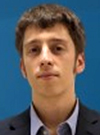
Contributions
Abstract: EP1372
Type: Poster Sessions
Abstract Category: Clinical aspects of MS - MS symptoms
Background and aims: The aim of this study was to investigate possible association between autonomic dysfunction and fatigue in patients with MS (pwMS).
Design/Methods: 70 pwMS were enrolled (51 females, mean age 33.8±9.1). Testing of the autonomic nervous system (ANS) consisted of Quantitative Sudomotor Axon Reflex Test (QSART), testing of the cardiovascular reflexes (heart rate and blood pressure responses to Valsalva maneuver and heart rate response to deep breathing) and the tilt table test. Composite Autonomic Scoring Scale (CASS) was utilized to quantify the autonomic dysfunction. Participants completed the Composite Autonomic System Score-31 (COMPASS-31), Modified Fatigue Impact Scale (MFIS), Beck depression scale (BDI-2) and Epworth Sleepiness Scale (ESS). Clinically relevant BDI-2 result was considered if the score was >18. Cut-off scores of ≥38 or ≥45 on the MFIS were used to stratify patients into a fatigued subgroup (N=17 and N=9, respectively) and a non-fatigued subgroup (N=53 and N=61, respectively).
Results: Fatigued patients, as defined by either MFIS cut-off values, were older and scored significantly worse on BDI-2 and COMPASS-31. There was a clear trend of lower sweating outputs on QSART at all measured sites, reaching statistical significance for distal leg (MFIS≥45) and foot (MFIS≥38). We found significant correlations between MFIS and age (rs=0.329, p=0.005), MFIS and Valsalva ratio (rs =-0.306, p=0.011), MFIS and sweating output on QSART at the forearm, proximal and distal lower leg (rs =-0.379, p=0.003, rs =-0.356, p=0.005 and rs =-0.345, p=0.006, respectively), MFIS and BDI-2 (rs =0.756, p< 0.001), and MFIS and COMPASS-31 (rs =0.607, p< 0.001). Multiple regression model showed that COMPASS-31, BDI-2 and ESS were independent predictors of fatigue (B=0.492, p=0.002, B=17.068, p=0.02 and B=1.122, p=0.009, respectively).
Conclusion: These results suggest an association between autonomic dysfunction and fatigue in MS patients.
Disclosure: Jelena Drulovic serves on scientific advisory boards for Bayer Schering Pharma, Merck Serono, Teva, Genzyme, a Sanofi Company, and received honoraria for speaking from Merck Serono, Teva, Bayer Schering, Genzyme, a Sanofi Company, Medis, Roche; and has also received research grant support from the Ministry of Education and Science, Republic of Serbia (project no. 175031).
Tatjana Pekmezovic has received compensation for consulting services, travel expenses for scientific meetings, and speaking honoraria from Bayer Schering Pharma, Merck Serono, Actavis/Teva, Roche, Gedeon Richter, Novartis; supported by a grant of the Ministry of Education, Science and Technological Development, Republic of Serbia (No. 175087 and 175090).
Mario Habek participated as clinical investigator and/or speaker for: Biogen, Sanofi Genzyme, Merck, Bayer, Novartis, Pliva/Teva, Roche, Alvogen, Actelion, Alexion Pharmaceuticals, TGI pharmaceuticals.
Abstract: EP1372
Type: Poster Sessions
Abstract Category: Clinical aspects of MS - MS symptoms
Background and aims: The aim of this study was to investigate possible association between autonomic dysfunction and fatigue in patients with MS (pwMS).
Design/Methods: 70 pwMS were enrolled (51 females, mean age 33.8±9.1). Testing of the autonomic nervous system (ANS) consisted of Quantitative Sudomotor Axon Reflex Test (QSART), testing of the cardiovascular reflexes (heart rate and blood pressure responses to Valsalva maneuver and heart rate response to deep breathing) and the tilt table test. Composite Autonomic Scoring Scale (CASS) was utilized to quantify the autonomic dysfunction. Participants completed the Composite Autonomic System Score-31 (COMPASS-31), Modified Fatigue Impact Scale (MFIS), Beck depression scale (BDI-2) and Epworth Sleepiness Scale (ESS). Clinically relevant BDI-2 result was considered if the score was >18. Cut-off scores of ≥38 or ≥45 on the MFIS were used to stratify patients into a fatigued subgroup (N=17 and N=9, respectively) and a non-fatigued subgroup (N=53 and N=61, respectively).
Results: Fatigued patients, as defined by either MFIS cut-off values, were older and scored significantly worse on BDI-2 and COMPASS-31. There was a clear trend of lower sweating outputs on QSART at all measured sites, reaching statistical significance for distal leg (MFIS≥45) and foot (MFIS≥38). We found significant correlations between MFIS and age (rs=0.329, p=0.005), MFIS and Valsalva ratio (rs =-0.306, p=0.011), MFIS and sweating output on QSART at the forearm, proximal and distal lower leg (rs =-0.379, p=0.003, rs =-0.356, p=0.005 and rs =-0.345, p=0.006, respectively), MFIS and BDI-2 (rs =0.756, p< 0.001), and MFIS and COMPASS-31 (rs =0.607, p< 0.001). Multiple regression model showed that COMPASS-31, BDI-2 and ESS were independent predictors of fatigue (B=0.492, p=0.002, B=17.068, p=0.02 and B=1.122, p=0.009, respectively).
Conclusion: These results suggest an association between autonomic dysfunction and fatigue in MS patients.
Disclosure: Jelena Drulovic serves on scientific advisory boards for Bayer Schering Pharma, Merck Serono, Teva, Genzyme, a Sanofi Company, and received honoraria for speaking from Merck Serono, Teva, Bayer Schering, Genzyme, a Sanofi Company, Medis, Roche; and has also received research grant support from the Ministry of Education and Science, Republic of Serbia (project no. 175031).
Tatjana Pekmezovic has received compensation for consulting services, travel expenses for scientific meetings, and speaking honoraria from Bayer Schering Pharma, Merck Serono, Actavis/Teva, Roche, Gedeon Richter, Novartis; supported by a grant of the Ministry of Education, Science and Technological Development, Republic of Serbia (No. 175087 and 175090).
Mario Habek participated as clinical investigator and/or speaker for: Biogen, Sanofi Genzyme, Merck, Bayer, Novartis, Pliva/Teva, Roche, Alvogen, Actelion, Alexion Pharmaceuticals, TGI pharmaceuticals.


